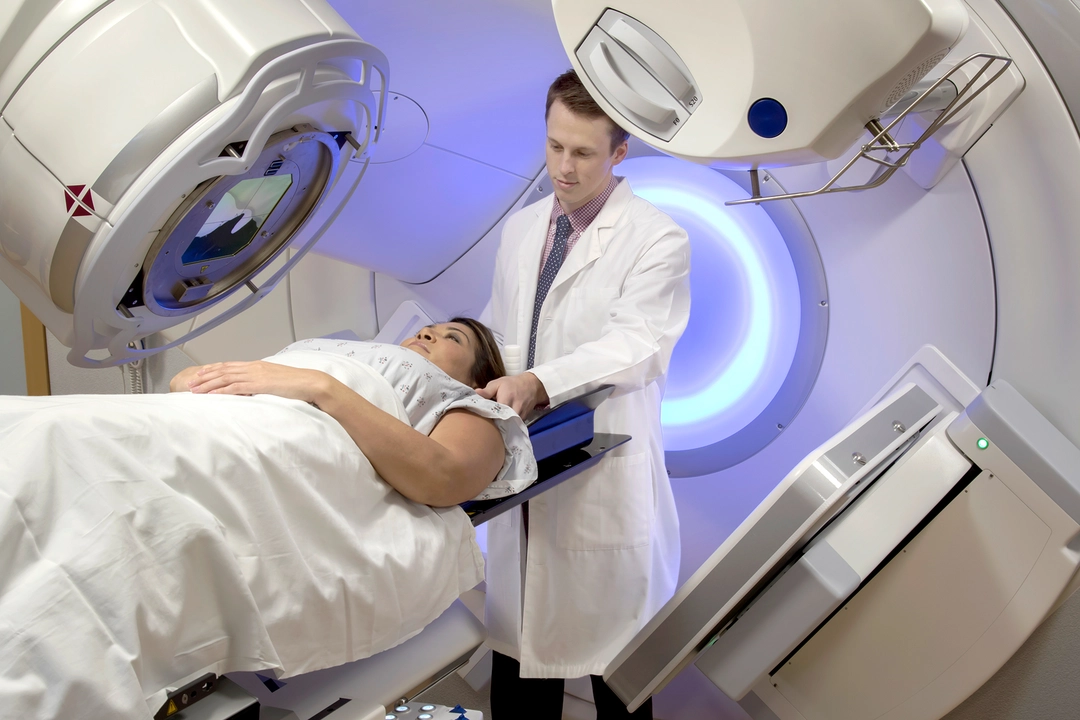Radiation Therapy: What It Is and How It Feels
Radiation therapy uses high-energy rays to target cancer cells. Sounds scary, but it’s a focused treatment that can shrink tumors, ease symptoms, or cure certain cancers. You won’t glow or make anyone else radioactive — that’s a common myth. The machines deliver radiation from outside the body or via small implants placed near the tumor.
Types and how they differ
There are a few common types you’ll hear about. External beam radiation (the most common) directs rays from a machine to the tumor. Brachytherapy places seeds or wires inside the body near the cancer. Stereotactic body radiation (SBRT) and stereotactic radiosurgery (SRS) are very precise and give higher doses in fewer sessions. Doctors pick the type based on tumor size, location, and your overall health.
Sessions are usually short. The actual beam time is often under 10 minutes, though you’ll be at the clinic 15–30 minutes for positioning. Treatments commonly run daily on weekdays for 1–7 weeks, depending on the plan. Some modern approaches cut that down to a few sessions.
What to expect during treatment
Before the first session you’ll have a planning visit called a simulation. That’s when they mark the treatment area, sometimes with tiny tattoos or skin marks. You’ll lie still on a table while a CT or MRI maps the tumor. Comfort tip: wear loose clothes and leave jewelry at home.
During a session, the therapist steps out but watches you the whole time. You won’t feel the radiation itself. Machines may move around you and make noise. If you need to cough or move, tell the tech — small adjustments are possible.
Side effects vary by area treated. Common short-term effects include fatigue and skin changes (redness, dryness, itching). Head and neck radiation can cause sore throat or mouth sores; chest radiation might bring cough or shortness of breath; pelvic radiation can cause bladder or bowel changes. Some effects appear weeks after starting treatment; others can show up months or years later.
Simple things help: gentle skin care (use approved moisturizers), avoid hot baths or tight clothing over the treated spot, stay hydrated, and boost protein in your meals to help healing. For mouth sores, rinse with salt-and-baking-soda mixes as recommended. Rest when you’re tired — short naps and light activity can both help.
Tell your team right away about severe pain, heavy bleeding, sudden swelling, high fever, or new breathing trouble. Ask about fertility preservation before pelvic or abdominal radiation if you might want children later.
Radiation is often combined with surgery, chemotherapy, or newer immunotherapies. That can increase side effects, but also raise the chance of stopping the cancer. Your care team will balance risks and benefits and customize follow-up checks.
If you want a quick checklist: bring comfy clothes, ask about parking and timing, keep a list of meds, follow skin and mouth care rules from your team, and write down questions before appointments. Good communication with your doctors makes the whole process smoother and less stressful.
The Role of Radiation Therapy in Eye Cancer Treatment
As a blogger, I recently delved into the topic of radiation therapy and its role in eye cancer treatment. I discovered that radiation therapy is an essential and effective method for treating various types of eye cancers, including ocular melanoma and retinoblastoma. The process involves targeting and destroying cancer cells with high-energy rays while preserving the surrounding healthy tissue. There are different types of radiation therapy used for eye cancer, such as plaque brachytherapy, proton beam therapy, and external beam radiation therapy, each with its own unique benefits. Overall, radiation therapy has been crucial in improving the prognosis and quality of life for many eye cancer patients, making it a vital component in the fight against this disease.

